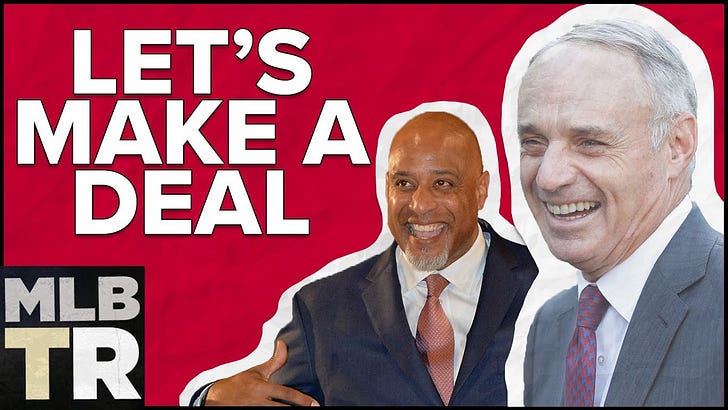There’s no perfect solution here, but …
I have an idea for what could change the discourse, not just of the owner-player imbroglio this year, but for future years. The biggest issue has always been the fundamental distrust. Owners have never, ever opened the books, going to occasionally ridiculous lengths to avoid any court case that would crack them open, even a bit.
So let’s get away from that and go to something that’s known: tv revenue. That is, broadcast revenue, of which there’s three buckets - national, local, and streaming.
The national part is easy. MLB has a seven-year, $5.1B contract with Fox and ESPN for those rights. Even I can do the math here and while it’s not exactly that simple, let’s agree to call it “National = $720,000,000.”
Local rights are something else. They’re much more difficult to get, largely because of the overlap between network ownership and revenue, as well as the varying deals that are largely but not entirely with market size.
This article from Fangraphs gives you an idea of just how varied they are. For simplicities sake, I will use the same 2016 figures as that article, which totals just shy of $1.5 billion ($1.459, plus the Blue Jays) so let’s agree to call it “Local = $1,500,000,000.” (Yes, this creates an inequity and no, I don’t know how to solve it, so I’m just going to toss it all in the pot.)
For internet rights, this gets a little trickier. Not only does MLB not give this out, it’s not directly owned by MLB as much any more after the sale of BAMTech to Disney. While MLB.com still serves up the content, they’re not doing it in-house, so we can’t think they’e getting 100 percent of the revenue. In 2012, there were a million downloads of MLB’s At Bat app. Let’s safely double that to 2 million, then say the average cost of a yearly subscription is 100 bucks. It’s more, I know, but there’s discounts, mid-season promotions, etc. Let’s agree to say that 2 million x 100 is internet, which is probably in the ballpark, making “Streaming = $200,000,000”. (I agree, it’s probably much higher.)
Total rights = $2.4 billion. That’s a nice number.
The average MLB payroll is $136 million in 2020, per Spotrac. That means total payroll for all clubs, players only, is just north of $4 billion dollars. Half of a season means you get a pro-rated salary number pretty much in line with MLB’s TV income.
Yes, the problem is that MLB may not get all of that money this year, but go with me. The framework here is what counts, not the details.
This matches up, is publicly known, and solves everyone’s problems not just right now, but in the future. Give players TV, the owners get everything else.
That sound you hear is owners choking on their sandwiches across the country.
Literally everything else is probably not worth trading out the golden goose of television for the owners, but let’s open this up a bit. Television deals have vastly expanded over the last few years, but will that continue? What reason would teams have to negotiate good TV deals if they’re not going to see the profits? The ownership of the networks would largely still pay off — ad sales, other programming, etc is still valuable.
It would become a de facto salary cap, but the sport has one of those in the “luxury tax” and that really hasn’t worked for anyone but the owners. A quick, easy, accountable separation into “TV” and “everything else” could work. It’s hardly a perfect solution, but at risk of sounding immodest, I haven’t heard a better one.
(I’m opening the comments for this one as a test.)





I've never looked at the numbers even at this high level, so am shocked that media contracts might only cover 60% of payroll in a given (normal) year. I've always assumed they were making money hand over fist via TV (again, relative to payroll).
If it means baseball, I'm for it. That means Manfred will automatically oppose it.